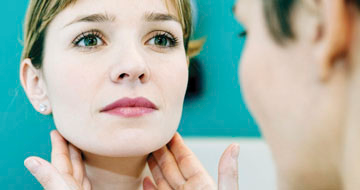
What is vulvodynia?
Recent research suggests that up to 1 in 6 women will have vulvodynia at some point in their lives. So why does the painful condition often go undiagnosed?
Ms Tania Adib, a Consultant Gynaecologist at our clinic, talks about how she helps patients to manage this often debilitating pain condition.
How do you diagnose vulvodynia?
I listen to what’s been happening for a patient and take a detailed history, before carrying out a careful examination. I need to make sure that the pain is due to vulvodynia. Which means ruling out all other conditions that could be causing pain, such as infection, pre-cancerous cells, herpes, cancer or lichen sclerosus.
I might also perform a vulvoscopy, which involves looking at the vulva with the naked eye and binoculars that are used for colposcopy, so I can see in detail what’s happening.
Essentially vulvodynia is pain where the vulva is entirely normal on examination. So if this is the case and I’ve also taken swabs, excluded infection, excluded dermatosis and excluded cancer and pre-cancer I will arrive at the diagnosis of vulvodynia.
Are GPs able to give a vulvodynia diagnosis?
If GPs suspect a diagnosis of vulvodynia they will often refer on to a specialist gynaecologist.
How do you treat vulvodynia?
It can be a very challenging condition to treat. Because it’s a complex pain syndrome there’s no standard, uniform treatment for vulvodynia. It’s all about trying to find something that suits the patient and her symptoms. Response to various treatments can vary quite dramatically.
Is medication effective?
One of the first lines of treatment I’d try is amitriptyline. It’s often used as an antidepressant, but it’s given at a much lower dose when used to manage pain. A lot of patients respond fantastically to it.
And for women who have localised pain I might use an injection of local anaesthetic and steroid and that can be really effective.
If a patient only experiences discomfort during intercourse, I might prescribe a lidocaine ointment, which they can apply to the vulva half an hour before intercourse. It numbs the vulva so can really help.
And can physiotherapy help?
It can improve the pain, especially if there is an element of vaginismus (when a patient is frequently overtensing her pelvic muscles). That in itself can cause discomfort and make the symptoms of vulvodynia worse, so working with a physiotherapist is really helpful.
Are there other treatments that work?
Vulvodynia causes nerves to receive pain inappropriately, and although it’s not always the case, this can triggered by an infection or an injury. Laser treatment can be effective in these cases because it helps to restructure the architecture of the subcutaneous tissues, and improves the anatomy of the nerves.
It’s still early days with these types of treatments though. And they are are only effective with certain patients.
And can vulvodynia be cured?
The outcomes of treatment are so variable. Some women can take amitriptyline and the pain improves significantly, meaning they can come off the medication. But very often the treatment will be ongoing.
Any advice for someone who’s experiencing vulval pain?
Gynaecological issues affect a woman’s femininity. Women with vulvodynia often feel that they’re imagining it all because there’s nothing to see. And any chronic pain has a psychological effect, because it’s so wearing. It can lead to depression because women end up feeling so alone in their situation.
Getting a diagnosis is so important as a woman finally feels heard. And she can then start exploring the most effective ways to improve the pain.
Finding a treatment for vulvodynia that works for you
If you’d like to learn more or make an appointment, please contact our clinic.











